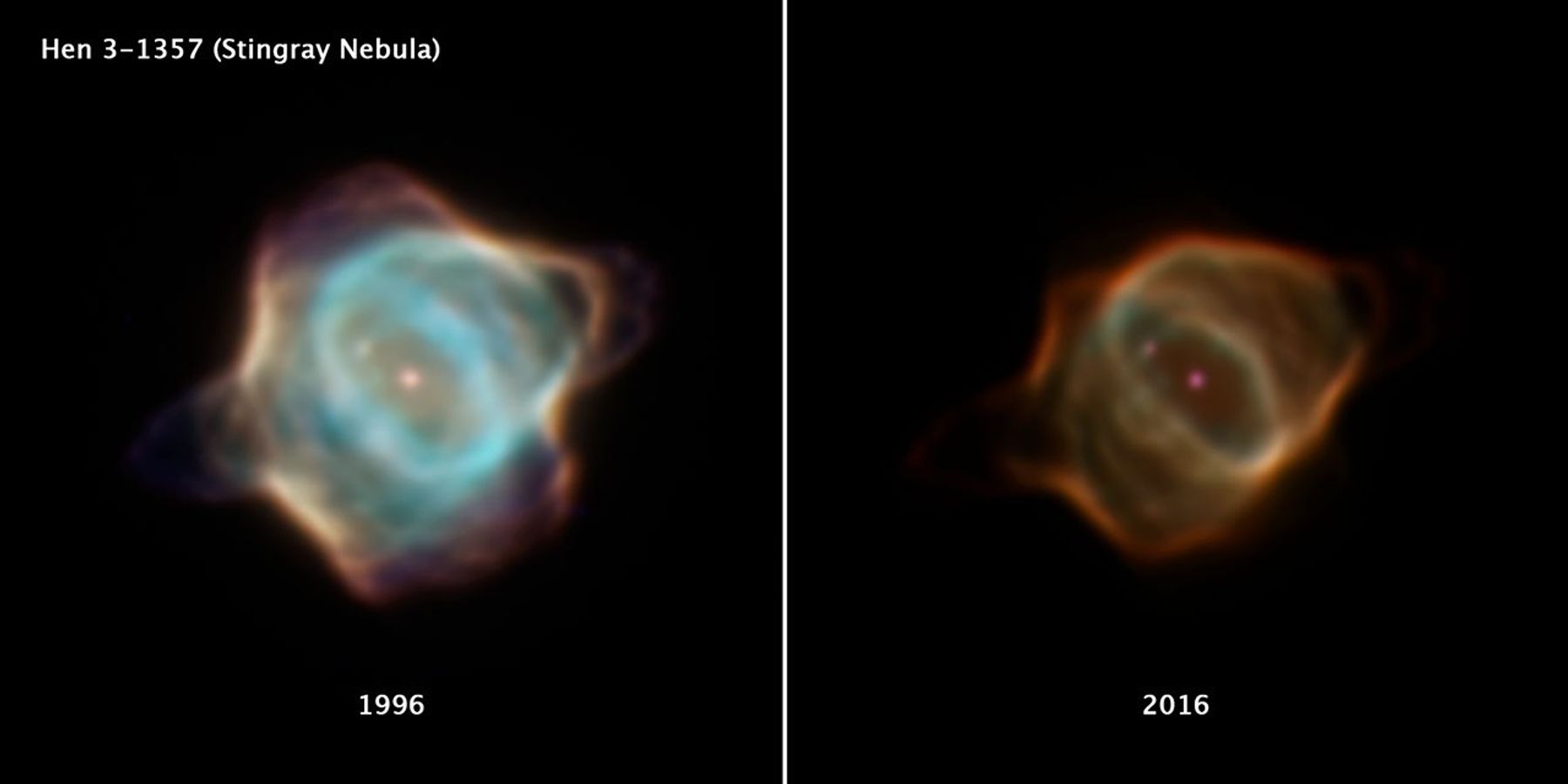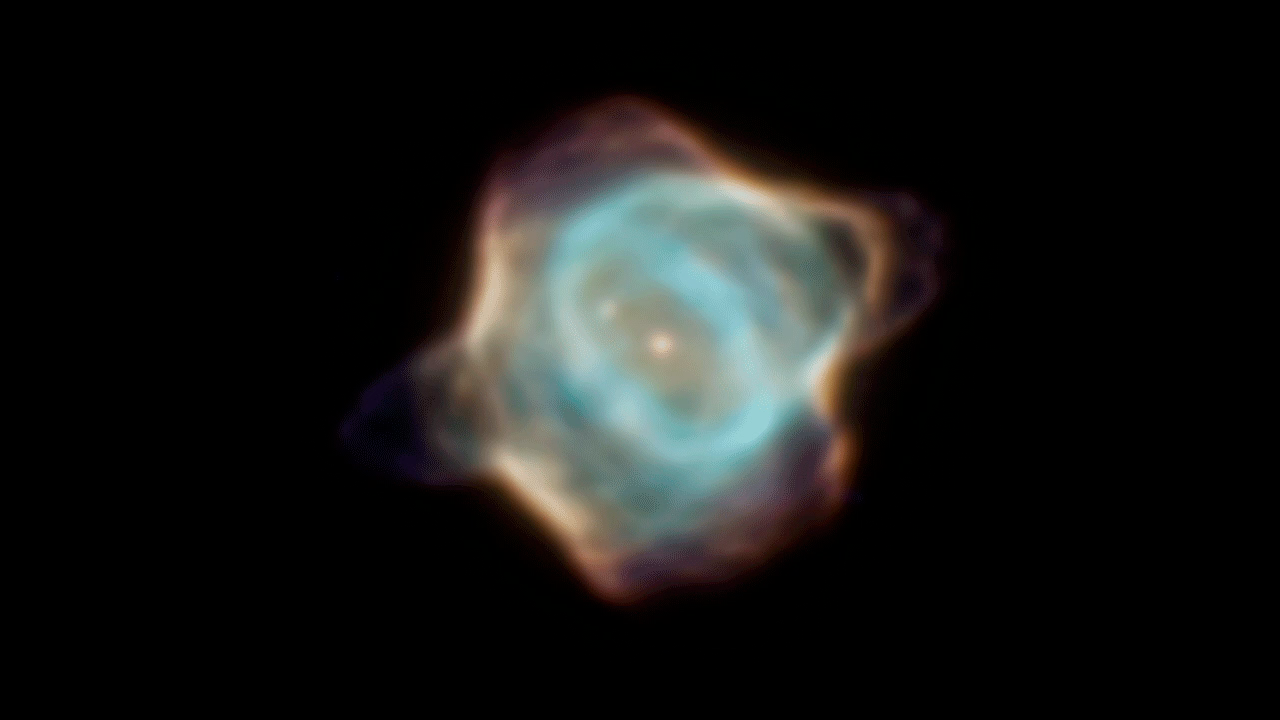1 min read
Fading Stingray Nebula

About the Object
- R.A. PositionR.A. PositionRight ascension – analogous to longitude – is one component of an object's position.17:16:21.07
- Dec. PositionDec. PositionDeclination – analogous to latitude – is one component of an object's position.-59:29:23.64
- ConstellationConstellationOne of 88 recognized regions of the celestial sphere in which the object appears.Ara
- DistanceDistanceThe physical distance from Earth to the astronomical object. Distances within our solar system are usually measured in Astronomical Units (AU). Distances between stars are usually measured in light-years. Interstellar distances can also be measured in parsecs.18,260 light-years
- DimensionsDimensionsThe physical size of the object or the apparent angle it subtends on the sky.Image is about 6 arcsec across (about 0.5 light-years)
About the Data
- Data DescriptionData DescriptionProposal: A description of the observations, their scientific justification, and the links to the data available in the science archive.
Science Team: The astronomers who planned the observations and analyzed the data. "PI" refers to the Principal Investigator. - InstrumentInstrumentThe science instrument used to produce the data.WFCP2 and WFC3/UVIS
- Exposure DatesExposure DatesThe date(s) that the telescope made its observations and the total exposure time.09 March 1996 and 22 January 2016
- FiltersFiltersThe camera filters that were used in the science observations.F502N, F656N, F658N
- Object NameObject NameA name or catalog number that astronomers use to identify an astronomical object.Hen 3-1357 (Stingray Nebula)
- Object DescriptionObject DescriptionThe type of astronomical object.Planetary Nebula
- Release DateDecember 3, 2020
- Science ReleaseHubble Captures Unprecedented Fading of Stingray Nebula
- Credit

These images are a composite of separate exposures acquired by the WFPC2 and WFC3/UVIS instruments on the Hubble Space Telescope. Several filters were used to sample narrow wavelength ranges. The color results from assigning different hues (colors) to each monochromatic (grayscale) image associated with an individual filter. In this case, the assigned colors are: Blue: F502N Green: F656N Red: F658N
Related Images & Videos

Stingray Nebula in 1996
This image shows the planetary nebula Hen 3-1357, nicknamed the Stingray nebula, captured by NASA’s Hubble Space Telescope in March 1996. The image captures the final stages of the central star’s life, where a ballooning shroud of gas is cast off by the dying star. This image...

Stingray Nebula in 2016
This image shows the planetary nebula Hen 3-1357, nicknamed the Stingray nebula, captured by NASA’s Hubble Space Telescope in January 2016. This image of the Stingray nebula shows it has changed drastically in brightness and shape when compared to its first portrait by Hubble in...
Share
Details
Claire Andreoli
NASA’s Goddard Space Flight Center
Greenbelt, Maryland
claire.andreoli@nasa.gov


































